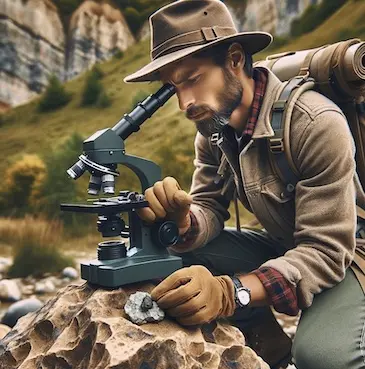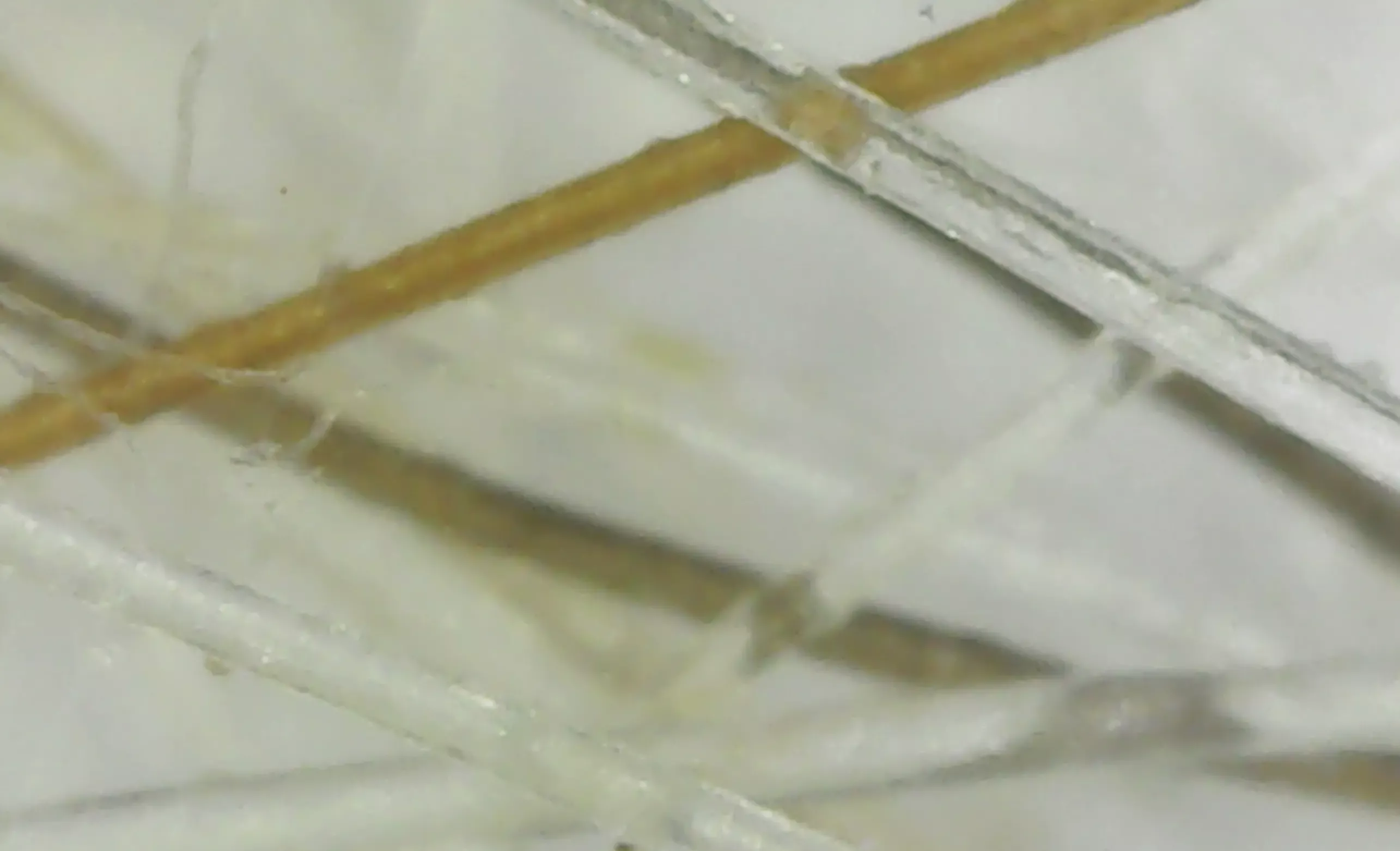- Home
- Jobs
Jobs That Use Microscopes: Applications
of Microscopes in Different Fields
Let's dive into the fascinating topic of the jobs that use microscopes, a tool that brings the minuscule into view. The microscope, an instrument that magnifies objects that are too small to be seen by the naked eye, is a vital tool in a variety of careers, offering the ability to closely observe and manipulate the tiniest of materials.
Microscopes in the Field of Medicine
Firstly, the medical field extensively uses microscopes. Physicians, particularly pathologists, use microscopes to examine blood and body tissue samples for any sign of disease or infection. They scrutinize these samples under the microscope, looking for abnormalities indicative of health problems.
In the medical field, Clinical Laboratory Technologists (and other skilled lab workers) also use microscopes frequently. They collect samples, perform tests, and analyze results to support physicians in diagnosing diseases. Microscopes are used to help identify bacteria, parasites, and other microorganisms in patients' samples which may be causing disease.
Medical and Biological Researchers often rely on microscopes to investigate the causes of diseases at a cellular level. They use a range of microscopes, depending on their study's focus, such as optical microscopes for typical lab tests or electron microscopes for more detailed views on biological material.
Pharmaceutical Chemists, who work to discover and develop new drugs, use microscopes to observe reactions, understand mechanisms, and determine the purity and quality of compounds.
Microbiologists also need microscopes to view bacteria, viruses, and other microorganisms that they work with in labs to understand the impact of these organisms on the environment, healthcare, and food safety.
Other Jobs That Use Microscopes
Forensic Scientist: Solving Crimes
with the Help of Microscopes
Forensic Scientists use microscopes extensively in their work to identify the cause of a crime or to gather evidence. Using a microscope, they can identify substances, check evidence for traces of blood or other fluids, or match ammunition or tool marks to a specific weapon.
Archaeologist: Uncovering History
with the Help of Microscopes
Jobs that use microscopes are not just limited to the pharmaceutical and medical sectors. They also play a substantial role in archaeology, where Microscopes help examine artifacts and fossils, assisting archaeologists in understanding our history and prehistory.
Numismatist: The Study of Money
Like archaeologists, numismatists also use microscopes to study the
artwork, script, and symbols on coins and other forms of currency. Tracking the
changes in these details over time can provide insights into historical changes
in a culture or civilization. Microscopic examination can reveal how the coin
was struck, what methods were used, and the sequence of the dies used in
striking.
Numismatics involves not only the physical
aspect of currency but also the history, economy, and culture. A microscope
plays a significant role in the research and collection, especially when
authenticating and grading coins and paper currency.
When assessing a coin's condition and value, numismatists use a microscope to carefully examine the coin for any signs of
wear, scratches, or other imperfections. Microscopes allow them to identify
minute details that are not visible to the naked eye but could vastly affect
the coin's grading.
The use of a microscope is equally important in
spotting counterfeits. Counterfeit coins might not have the same level of
detail as the original, or they may have tool marks or casting seams that
wouldn't be present on a legitimate coin. By closely examining a suspicious
coin under a microscope, a Numismatist can often determine whether it is genuine
or counterfeit.
Ecology and Habitat Study
Ecologists, too, use microscopes in their work. They might study the layers of lake-bed sediments through a microscope in order to understand changes in the local ecology over time. Similarly, they might study the tiny creatures that inhabit the soil or are living within bodies of water to gain insights into the local ecosystem.


Geologist and Gemologist: Examining Earth's
Materials with Microscopes
The field of geology also utilizes microscopes. Geologists use them to determine the mineral content and structure of rocks, aiding in mapping out areas for mining or understanding the history of our planet.
Another intriguing field includes Gemologists, who use specialized microscopes to study gems and precious stones. Their microscope usage helps identify the type, quality, and value of these stones.
Materials Scientist: Understanding
Materials at a Microscopic Level
Jobs in the material science sector often involve using a microscope. Material scientists and engineers use microscopes to examine the structure of materials at an atomic level, which helps in enhancing product performance or developing new materials.
Agriculture and Food Production
In the agricultural sector, entomologists (scientists who study insects) often use microscopes to identify insect species or to study their body structures and behaviors for pest control.
Moreover, food scientists and quality assurance technicians in the food manufacturing industry will often be found using microscopes. They use these tools to check the microstructure of food to understand its texture and consistency, or to look for contaminants.
Veterinary Pathologist: Using
Microscopes to Diagnose Animal Diseases
In the world of veterinary medicine, practitioners use microscopes to examine samples (such as skin scrapings, blood or fecal matter) from animals for diagnostic purposes.
Many Other Fields Use Microscopes:
Teaching, Art,
Electronics, Marine Biology
Teaching is another profession that entails using a microscope, particularly for science teachers. This is useful in imparting a practical understanding of biology, physics, or geology to their students.
Art historians and art restorers often use microscopes to examine works of art in extreme detail. Analysis under the microscope can provide unique insights into the techniques and materials used by the artist, or to verify the age and authenticity of the artwork.
In the electronics industry, microscopes are used extensively in quality control and circuitry design. Microelectronics engineers use powerful microscopes to inspect the tiny components of integrated circuits.
Dark field microscopes are used by Marine Biologists to study marine microorganisms, looking at their structure, functions, and relationships with the environment, contributing to the vast field of marine science.
Naonengineering: Working at the Atomic Level
Finally, the field of nanotechnology and nanoengineering relies heavily on microscopes, especially scanning electron microscopes and atomic force microscopes. These facilitate examination and manipulation at the nano-scale assisting in developing cutting-edge technology for medical, environmental, and industrial applications. The microscope usage in this field is on an atomic level, providing insightful observations that guide the creation of technology at an incredibly small scale.
The versatility of microscopes at work is truly remarkable, shaping numerous professions across different fields, industries, and areas of study. From examining microscopic organisms to helping solve crimes, microscopes serve as a key tool, bringing us countless benefits and advancements in society.












